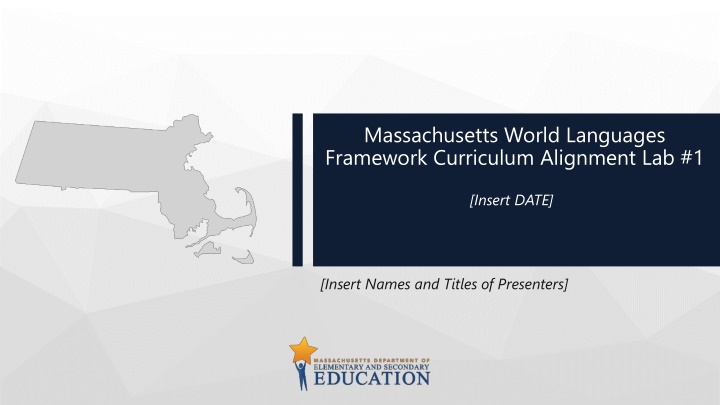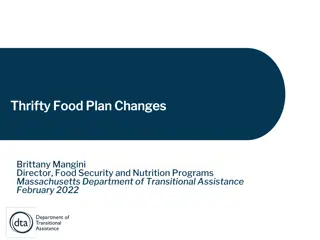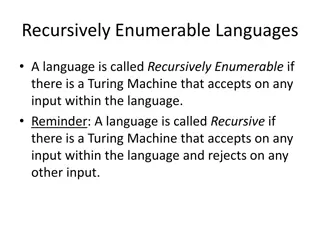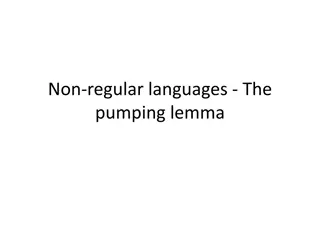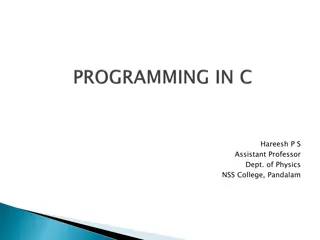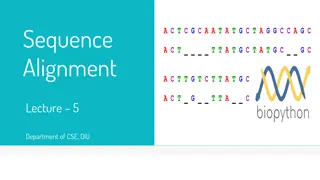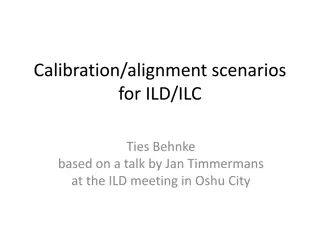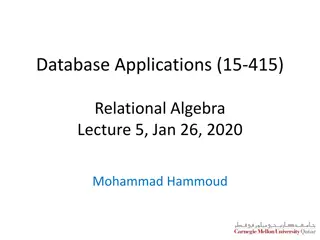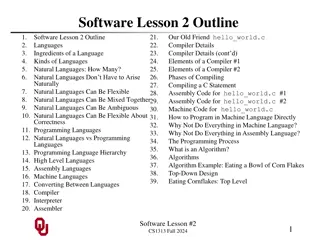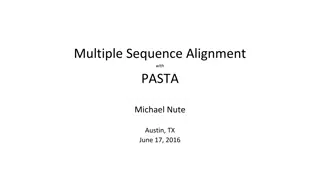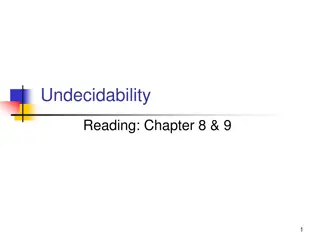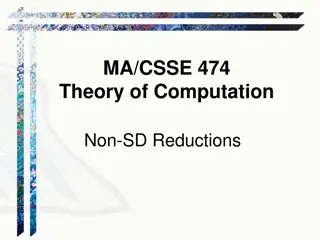Massachusetts World Languages Curriculum Alignment Lab #1 Review
Brief review of online modules 1-3, introduction to the Massachusetts World Languages Curriculum Alignment Guide, exploration of proficiency- and equity-based approaches, analysis of sample unit plans, and practical activities using the Curriculum Alignment Guide for unit planning.
Download Presentation

Please find below an Image/Link to download the presentation.
The content on the website is provided AS IS for your information and personal use only. It may not be sold, licensed, or shared on other websites without obtaining consent from the author.If you encounter any issues during the download, it is possible that the publisher has removed the file from their server.
You are allowed to download the files provided on this website for personal or commercial use, subject to the condition that they are used lawfully. All files are the property of their respective owners.
The content on the website is provided AS IS for your information and personal use only. It may not be sold, licensed, or shared on other websites without obtaining consent from the author.
E N D
Presentation Transcript
Massachusetts World Languages Framework Curriculum Alignment Lab #1 [Insert DATE] [Insert Names and Titles of Presenters]
Overview Today we will Briefly review the content of Online Modules 1-3 Introduce the Massachusetts World Languages Curriculum Alignment Guide Discuss how the Guide incorporates proficiency- and equity-based approaches View and discuss sample unit plans through the lens of proficiency and equity Practice using the Curriculum Alignment Guide for Unit Planning 2 Massachusetts Department of Elementary and Secondary Education
Review of Modules 1, 2, 3 Review of Modules 1, 2, 3
Module 1 Review Overview Introduces the 2021 Massachusetts World Languages Curriculum Framework Explains how the Framework is organized Explains how the Implementation Series is organized 4 Massachusetts Department of Elementary and Secondary Education
Module 1 Review What is the 2021 Framework? Presents standards for the teaching of World Languages in Massachusetts Aligned to the ACTFL World-Readiness Standards and Proficiency Guidelines and other Massachusetts Frameworks Includes a focus on social emotional skills and social justice https://www.doe.mass.edu/frameworks/worl d-languages/2021.pdf 5 Massachusetts Department of Elementary and Secondary Education
Module 1 Review What are the components of the Framework? Vision Guiding Principles Domains Practices Content Standards 6 Massachusetts Department of Elementary and Secondary Education
Module 1 Review What are the components of the content standards? Context Support Functions Comprehensibility Text Type 7 Massachusetts Department of Elementary and Secondary Education
Module 2 Review Overview Explains what proficiency is and why it s important for world language education Discusses how to use proficiency to guide instruction Explores the relationship between proficiency and the Massachusetts World Languages Framework 8 Massachusetts Department of Elementary and Secondary Education
Module 2 Review What is world language proficiency and why is it important? The ability to use a language in real-world situations in a spontaneous and non-rehearsed context Refers to skills, abilities, and competencies in listening, viewing, reading, speaking, signing, and writing Includes linguistic and cultural proficiency Encourages cross-cultural connections and allows full participation in local and global communities 9 Massachusetts Department of Elementary and Secondary Education
Module 2 Review Core Practices for Proficiency-Based World Language Learning From ACTFL Facilitate target language comprehensibility Guide learners through interpreting authentic resources Design interpersonal communication tasks Plan with backward design model Teach grammar as concept and use in context Provide appropriate feedback 10 Massachusetts Department of Elementary and Secondary Education
Module 2 Review How does the Framework support proficiency-based instruction? Emphasizes the importance of linguistic and cultural proficiency Provides structure, standards, and practices that promote proficiency Supports the Massachusetts State Seal of Biliteracy 11 Massachusetts Department of Elementary and Secondary Education
Module 3 Review Overview Explains what equity is and why it is important for world language education Discusses how to use equity to guide instruction Explores the relationship between equity and the Massachusetts World Languages Framework 12 Massachusetts Department of Elementary and Secondary Education
Module 3 Review What are equitable practices and policies and why are they important? Every student has access to the educational resources and rigor they need to succeed at the right moment in their education, regardless of gender, racial, ethnic, and cultural identity, linguistic background, sexual orientation, family income, ability, or other personal or social circumstances (nationality, religious affiliation, etc.) Ensures that all students are able to learn and thrive Addresses deficit-based policies, practices, and perspectives Supports, celebrates, and creates opportunities for historically marginalized populations 13 Massachusetts Department of Elementary and Secondary Education
Module 3 Review How do I use equitable approaches to language teaching? Recognize and redress biases in policies, practices, and perspectives Center, affirm, and sustain different aspects of students identities Ensure all students and communities feel represented and respected 14 Massachusetts Department of Elementary and Secondary Education
Module 3 Review How does the Framework support equity in language teaching? Emphasizes the need for inclusive world language education Makes equity a key component of all the Guiding Principles Includes Social and Emotional Well-being and Social Justice Practices, woven through the standards 15 Massachusetts Department of Elementary and Secondary Education
Curriculum Alignment Curriculum Alignment
Curriculum Alignment Teams The Department expects that the complete alignment of every unit in every course could take several years. This is a journey, not a race. While all teachers should have a voice in the curriculum, the direct involvement in curriculum alignment may vary, depending upon the skills, schedules, and interests of teachers. We recommend the formation of Curriculum Alignment Teams 17 Massachusetts Department of Elementary and Secondary Education
Who should be on your districts Curriculum Alignment Team? At least one district-level representative (Curriculum director, WL director, etc.) WL program leader At least one WL teacher representative for each language taught At least one WL teacher representative from each building where WLs are taught Additional considerations: Special Ed. faculty, ELL faculty, community members, parents, students, etc. Massachusetts Department of Elementary and Secondary Education
Introduction to the Curriculum Alignment Guide Introduction to the Curriculum Alignment Guide
Curriculum Alignment Guide What is the Curriculum Alignment Guide? A living document for you to plan for your courses and key components of your units consider the sequencing of units and how they articulate with one another within the course check for alignment to the Standards reflect on successes and challenges Includes: Curriculum Alignment Guide for Course Planning Curriculum Alignment Guide for Unit Planning How To document to support you in completing and using the Guide 20 Massachusetts Department of Elementary and Secondary Education
Curriculum Alignment Guide for Course Planning Curriculum Alignment Guide for Course Planning
Curriculum Alignment Guide for Course Planning (1/4) Course Information What are the end of year proficiency targets for my students across communicative modes and domains of language? Centering Student Diversity Who are my students and what topics will be appropriate for and reflective of their backgrounds, identities, and experiences? 22 Massachusetts Department of Elementary and Secondary Education
Curriculum Alignment Guide for Course Planning (2/4) Annual Unit Plan What themes and topics will be covered across units during the academic year, and how do they extend beyond the classroom? Two pages with space to plan for 10 units 23 Massachusetts Department of Elementary and Secondary Education
Curriculum Alignment Guide for Course Planning (3/4) Standards Summary What standards will be focused on or introduced across units during the academic year? Two pages with space for World Language Content Standards and other standards 24 Massachusetts Department of Elementary and Secondary Education
Curriculum Alignment Guide for Course Planning (4/4) Reflection and Analysis Which students connected to the units, which unit activities were most effective, and how aligned were different components of the units? 25 Massachusetts Department of Elementary and Secondary Education
Curriculum Alignment Guide for Unit Planning Curriculum Alignment Guide for Unit Planning
Curriculum Alignment Guide for Unit Planning (1/5) Unit Overview What is the overall focus and structure of the unit, and what skills will students develop or advance in this unit? 27 Massachusetts Department of Elementary and Secondary Education
Curriculum Alignment Guide for Unit Planning (2/5) Standards Summary What standards will be focused on or introduced in the unit? Two pages with space for World Language Content Standards and other standards 28 Massachusetts Department of Elementary and Secondary Education
Curriculum Alignment Guide for Unit Planning (3/5) Summative Assessment How will students demonstrate how well they have met unit goals/objectives, and how will I measure and provide feedback on student performances? 29 Massachusetts Department of Elementary and Secondary Education
Curriculum Alignment Guide for Unit Planning (4/5) Instruction What learning activities and resources will support students in meeting unit goals/objectives, and how will I check for understanding? What materials, strategies, and supports will I use to ensure equity in the unit, and which Core Practices will I use? Two pages with space to check for use of Core Practices and plan for Social and Emotional Well-Being, Social Justice, differentiation for equity, and technology 30 Massachusetts Department of Elementary and Secondary Education
Curriculum Alignment Guide for Unit Planning (5/5) Reflection and Analysis Which students connected to the unit, which unit activities were most effective, and how aligned were different components of the unit? 31 Massachusetts Department of Elementary and Secondary Education
Demonstration: Sample Unit Plans Demonstration: Sample Unit Plans Think about how proficiency and equity are incorporated in the unit plans!
Sample Insert samples when available 33 Massachusetts Department of Elementary and Secondary Education
Discussion Discussion: Sample Unit Plans What proficiency-based practices and materials did you notice in these samples? What equitable practices and materials did you notice in these samples? What are some strengths of these samples? What could be added to improve these samples? How might you use these samples when planning your own units? 34
Application: Using the Guide Application: Using the Guide Complete the Unit Overview and Standards Summary sections of the Curriculum Alignment Guide for Unit Planning o Think about proficiency and equity!
Discussion Discussion: Using the Guide How did you think about and incorporate proficiency while using the Guide? o Did you identify appropriate proficiency targets for your students? o Did you identify targets across communicative modes and domains of language? How did you think about and incorporate equity while using the Guide? o Did you identify who your students are and what assets they bring to the classroom? o Did you identify topics that will be linguistically and culturally appropriate? o Did you identify what resources will reflect your students identities and experiences? What are some of the standards that you plan to focus on in your unit? What are some student backgrounds, assets, and topics you plan to represent in your unit? What was challenging about aligning your unit using the Guide? 36
Preview and Next Steps In our next Curriculum Alignment Lab, we will Review Modules 4, 5, and 6 Explore and discuss more sections of the Curriculum Alignment Guide View and discuss sample unit plans with a focus on Interpersonal and Presentational Communication Continue using the Curriculum Alignment Guide for Unit Planning 37 Massachusetts Department of Elementary and Secondary Education
Check for Learning Check for Learning 38
Thank you THANK YOU [Enter names of presenters] [Enter contact info] www.doe.mass.edu [Enter contact info] 75 Pleasant Street, Malden, MA 02148
